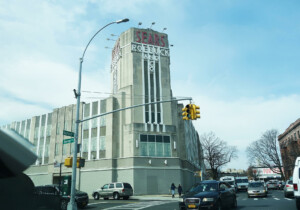The National Parks Service (NPS) and United States Secretary of the Interior Sally Jewell announced the designation of 24 new National Historic Landmarks this week, ushering the department’s final set of designations under the secretary’s tenure.
In a press release announcing the selections, Secretary Jewell focused on the cultural and historical diversity of the sites, stating, “These 24 new designations depict different threads of the American story that have been told through activism, architecture, music, and religious observance. Their designation ensures future generations have the ability to learn from the past as we preserve and protect the historic value of these properties and the more than 2,500 other landmarks nationwide.”
The new monuments are drawn from a diversity of sites and range from antique works of infrastructure to noted architectural projects. Among the latter set of new monuments is The Neutra Studio and Residence (VDL Research House) in Los Angeles, where the architect Richard Neutra lived and practiced. The structure is a seminal work of International Style and midcentury modern architectural styles and was used by Neutra as a home office during the course of much of his career. The house was gifted to Cal Poly Pomona College of Environmental Design in 1990 by Richard Neutra’s wife Dione and now plays host to cultural programming.
Another of Neutra’s works—the Painted Desert Community Complex, headquarters for the Petrified Forest National Park in Apache County, Arizona—was also included in this year’s list. The project, designed by Neutra and Robert E. Alexander in the International Style, features broad, low-slung building masses punctuated by alternating expanses of curtain wall windows and masonry construction. The structure is designed around an interior, gallery-access courtyard and is attached to a Neutra-designed filling station.
This year’s list also includes many sites of importance to civil rights movements and to indigenous cultures from across the country.
In the west, the Our Lady of Guadalupe Mission Chapel (McDonnell Hall) in San Jose, California played a vital role in the Mexican American civil rights movement as a place of worship for ethnic Mexican migrant farmworkers in the surrounding community. The building was used as the home for the Community Service Organization (CSO), a group whose work supported the ascendance of Chicano civil rights leader and organizer César Chávez during the 1950s and 1960s. According to the press release, “The work carried out at the chapel ultimately helped shape modern American Latino identity.”
The NPS list also includes the settlement in the Walrus Islands Archeological District near Togiak, Alaska, one of the few remaining sites related to human occupation of the Bering Sea continental shelf. The settlement dates to an era of much lower sea levels when then Bering Sea existing as a land bridge between Asia and North America, roughly 6,000 years ago. According to the release, Round Island, one of seven islands in the archeological district, was populated by seafaring peoples who settled the area and practiced subsistence farming and hunting sites.
A site known as 48GO305, or the “Hell Gap Paleoindian Site,” in Goshen County, Wyoming was also highlighted. The location is the site of “repeated occupations by nine Paleoindian cultural complexes in well-stratified deposits,” and also represents the only site that contains remains from “all of the cultural complexes known on the Plains spanning from between 13,000 and 8,500 years ago.”
For a full list of sites, see the Department of the Interior website.










